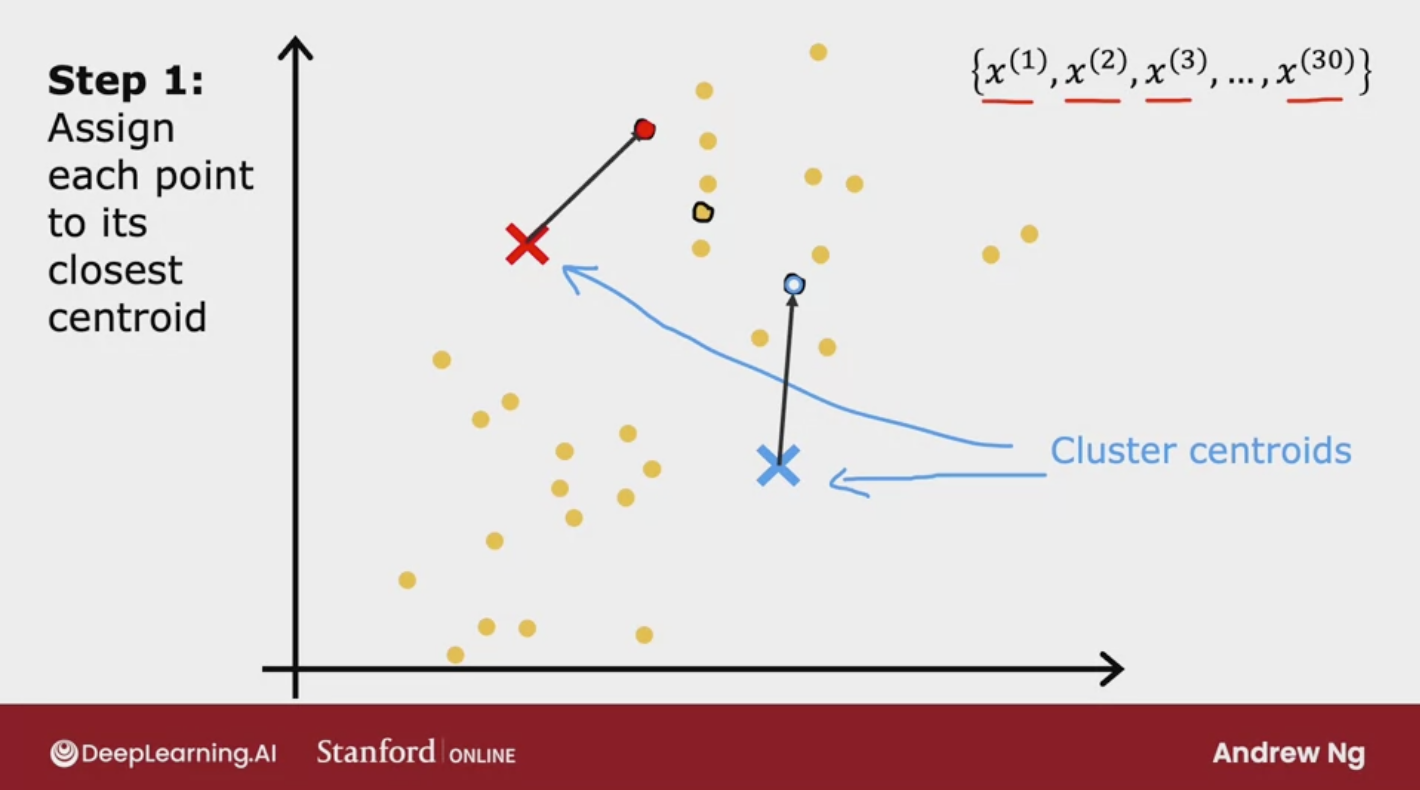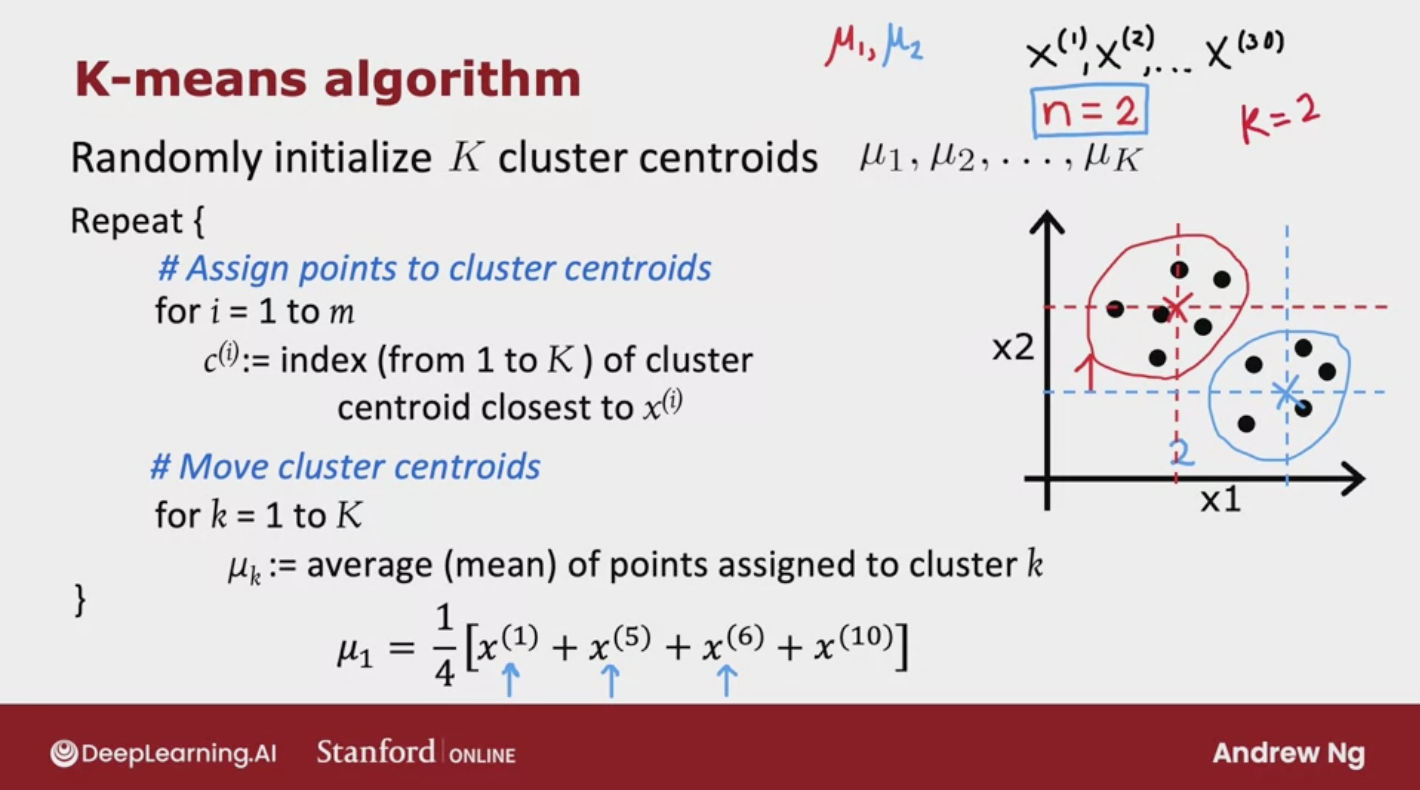What is clustering?
clustering algorithm looks at a number of data points and automatically finds data points that are related or similar to each other
In supervised learning, the dataset included both the inputs x as well as the target outputs y
In unsupervised learning, you are given a dataset with just x, but not the labels or the target labels y
Applications of clustering
Grouping similar news
Market segmentation
DNA analysis
Astronomical data analysis
K-means intuition
Take a random guess at where might be the center of the clusters
The first is assign points to cluster centroid and the second is move cluster centroids
Repeat until it finds that there are no more changes to the points or to the locations of the clusters centroids
K-means algorithm
μ Corner cases
when a cluster has 0 points assigned to it
delete the cluster or initialize one more random cluster
Optimization objective
c ( i ) x ( i ) μ k μ c ( i ) x ( i )
Cost function
J ( c ( i ) , ... , c ( m ) , μ 1 , ... , μ k ) = m 1 i = 1 ∑ m ∣∣ x ( i ) − μ c ( i ) ∣ ∣ 2 mi n c ( i ) , ... , c ( m ) , μ 1 , ... , μ k J ( c ( i ) , ... , c ( m ) , μ 1 , ... , μ k )
Initializing K-means
Choose K < m
Randomly pick K
Set μ 1 μ 2 μ k K
Random initialization
For i = 1 to 100 { # Randomly initialize K-means # Run K-menas. Get c_1,...c_m, mu_1,...mu_k # Compute cost function (distortion) } # pick set of clusters that gave lowest cost J Choosing the number of clusters
Elbow method
Minimizing the number of cluster is not a good practice
Evaluate K-means based on how well it performs on that later purpose




